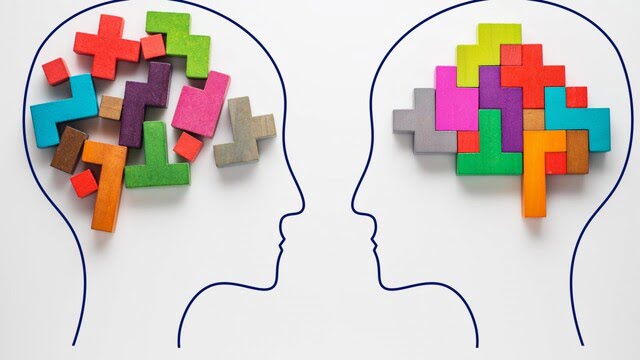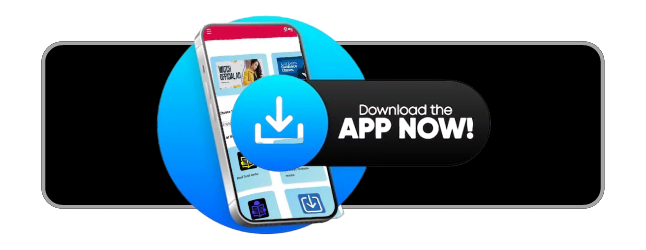Introduction: The Hidden Power of Cognitive Flexibility
Limiting beliefs—deep-rooted convictions that we are not capable, deserving, or talented enough to achieve our goals—often hinder the road to success. These mental barriers prevent us from seeing new possibilities and keep us stuck in self-defeating patterns. While positive thinking and a growth mindset are commonly recommended, cognitive flexibility is a lesser-known yet powerful tool for overcoming limiting beliefs.
Cognitive flexibility, or the ability to adapt our thinking and behavior in response to new and changing circumstances, is crucial for dismantling the mental walls we build around ourselves. By fostering mental adaptability, we can shift from rigid, fixed beliefs to a mindset that embraces possibilities, solutions, and abundance. This article will explore how cognitive flexibility helps overcome limiting beliefs and provide practical strategies to cultivate this skill, leading to a more successful and fulfilled life.
What Is Cognitive Flexibility?
Cognitive flexibility refers to the brain’s ability to switch between thinking about two different concepts or thinking about multiple concepts simultaneously. It is a hallmark of adaptable thinking and problem-solving. Unlike a growth mindset, which focuses on the belief that skills and abilities can improve with effort, cognitive flexibility is about the brain’s capacity to adjust in real time, allowing individuals to navigate complex and changing environments. This mental agility is crucial in breaking free from deeply ingrained limiting beliefs.
Researchers have shown that cognitive flexibility is linked to executive functioning, a set of cognitive processes including planning, attention control, and emotional regulation. When we become stuck in rigid thinking patterns, our ability to consider alternative solutions or opportunities diminishes, reinforcing the very limiting beliefs that hold us back. For instance, someone who believes they are “bad at math” might never try to improve because their thinking has become inflexible, locked into that belief.
Cognitive flexibility allows us to question these limiting beliefs and open up to new ways of thinking, behaving, and achieving success. As our brain learns to adapt to new situations, we become better equipped to challenge long-held assumptions and develop an abundance mindset.
The Impact of Cognitive Inflexibility on Limiting Beliefs
Cognitive inflexibility, on the other hand, is the tendency to stick to familiar thought patterns even when they no longer serve us. This rigidity contributes significantly to the formation and persistence of limiting beliefs. When our thinking is inflexible, we often fail to see alternative perspectives or possibilities, which can reinforce beliefs like “I can’t do this” or “This will never work.”
Research on cognitive rigidity suggests that it can impair problem-solving and decision-making. Individuals with cognitive inflexibility may struggle with change, clinging to past behaviors and thoughts, even when they know these are detrimental. In such a state, a person might say, “I’ve always been this way, and it’s too late to change.”
Cognitive inflexibility leads to cognitive distortions, such as all-or-nothing thinking (e.g., “If I fail, I am a failure”) or overgeneralization (e.g., “I’ve failed once, so I’ll always fail”). These distortions perpetuate limiting beliefs by creating a narrow view of reality. Over time, this creates a feedback loop where negative beliefs reinforce rigid thinking, and rigid thinking solidifies negative beliefs.
Breaking free from this loop requires enhancing cognitive flexibility, which enables individuals to see beyond their current limitations and adopt new strategies for growth and success.
Strategies to Cultivate Cognitive Flexibility
1. Embrace Ambiguity
Many limiting beliefs stem from our discomfort with uncertainty. We crave predictability, which often leads us to adopt rigid beliefs and behaviors. Embracing ambiguity involves learning to tolerate and even thrive in uncertain situations. By becoming comfortable with the unknown, you enhance your ability to consider multiple possibilities rather than sticking to a fixed outcome.
Research suggests that people who are more tolerant of ambiguity tend to have greater cognitive flexibility. In practical terms, this might mean taking on tasks that stretch your abilities or venturing into new experiences without a predetermined outcome. For example, rather than avoiding a new role at work because of a limiting belief like “I’m not qualified,” try approaching it with curiosity and openness to learning.
2. Challenge Your Assumptions
Limiting beliefs often go unchallenged because we accept them as facts. Cognitive restructuring, a technique from Cognitive Behavioral Therapy (CBT), can be instrumental in breaking down these beliefs. This process involves identifying a limiting belief and asking critical questions such as:
- “Is this belief based on evidence?”
- “Could I be exaggerating the impact of this situation?”
- “What alternative explanations could exist?”
Challenging your assumptions requires self-awareness and the willingness to question long-standing thoughts. Studies show that individuals who practice cognitive restructuring are better able to adapt their thinking to new information, thereby increasing cognitive flexibility. This technique not only weakens limiting beliefs but also fosters a mindset open to growth and change.
3. Engage in Brain Exercises
Cognitive flexibility can be trained through specific exercises designed to improve mental adaptability. Activities such as problem-solving puzzles, learning new languages, or even trying new hobbies engage the brain in ways that promote flexible thinking. According to neuroscience, such activities stimulate the brain’s prefrontal cortex, which is responsible for executive functions like decision-making and adaptability.
One simple yet effective brain exercise is to switch tasks frequently. Multitasking requires the brain to adapt to different sets of rules or goals, which helps improve mental flexibility. Another method is to take up activities that require you to learn new skills, such as playing a musical instrument or taking a different route to work. These activities challenge the brain to form new neural pathways, which enhances cognitive flexibility over time.
4. Mindfulness and Meditation
Mindfulness is a powerful tool for cultivating awareness of your thoughts and breaking free from automatic, limiting patterns. By staying present in the moment, mindfulness allows you to observe negative or rigid thoughts without judgment, creating space to choose more flexible, adaptive responses.
Meditation, particularly practices like mindfulness meditation, has been shown to increase cognitive flexibility by promoting emotional regulation and decreasing automatic reactions. Regular mindfulness practice enhances the brain’s ability to switch between different tasks and thought processes, making it easier to let go of limiting beliefs and embrace new opportunities.
5. Visualize Success
Visualization is another effective strategy for overcoming limiting beliefs. This mental exercise involves imagining yourself succeeding in specific situations, focusing on the emotions, actions, and outcomes associated with that success. Visualization helps rewire the brain by reinforcing positive beliefs, such as “I am capable” or “I can achieve my goals”.
By regularly visualizing success, you can replace negative, limiting beliefs with empowering, abundant thoughts. Visualization not only strengthens cognitive flexibility but also primes your brain to seek out and act on opportunities that align with your goals.
6. Challenge Limiting Beliefs Through Action
The most direct way to overcome limiting beliefs is to prove them wrong through action. Take small, manageable steps toward the goals that your limiting beliefs have held you back from. For example, if you believe you’re not a good public speaker, try volunteering to give a short presentation at work. By taking action, you will gather evidence that contradicts your limiting belief, weakening its power over time.
Each successful action you take reinforces the belief that change is possible, which in turn increases cognitive flexibility. Over time, this approach builds confidence and helps dissolve even deeply ingrained limiting beliefs.


































